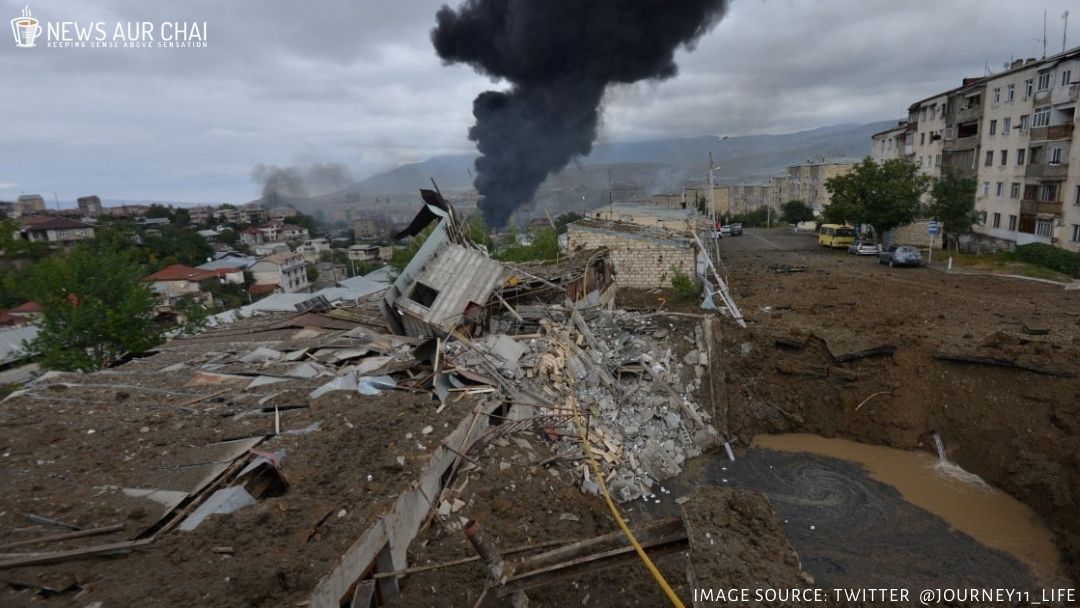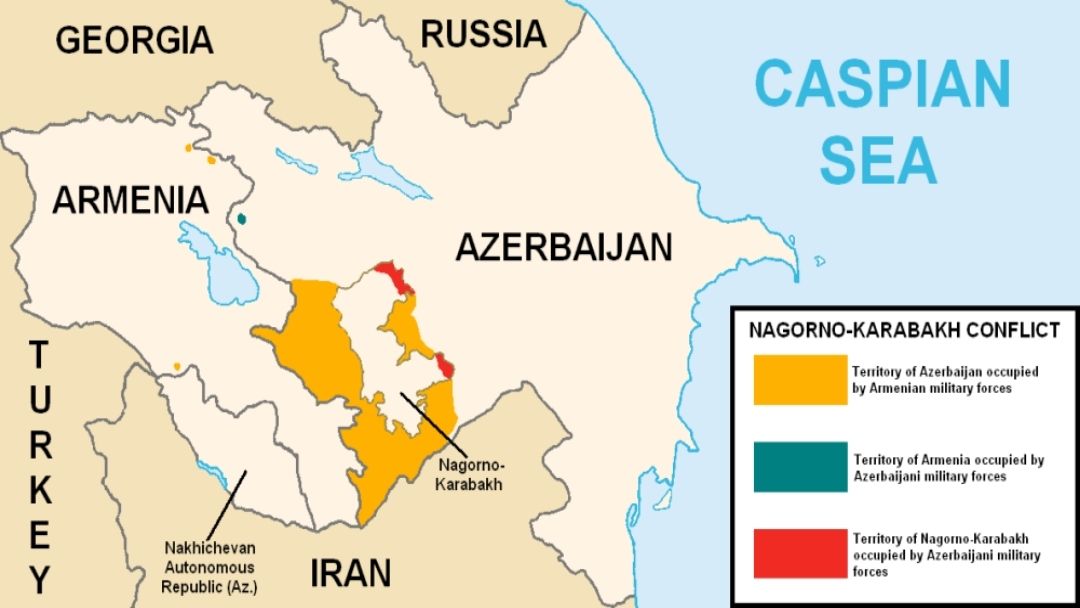
Armenia and Azerbaijan are currently involved in the deadliest war since the 1990s over a piece of land located in the mountainous region of South Caucasus, Nagorno Karabakh. The ongoing armed conflict which started on September 27, took a toll of more than 250 civilians and servicemen in a week. Recently, both the nation declared martial law and mobilised the troops to prepare for large scale war.
Nagorno Karabakh region:
The region is under international conflict since 1988. Nagorno Karabakh region, after the collapse of soviet, came into the rule of Azerbaijan and is currently recognised as Baku’s territory. However, the ethnic majority is of Armenia and prefer to stay with the same. This eventually led to armed clashes in the late 1980s and Nagorno-Karabakh declared itself as an independent ‘Republic of Artsakh’ state.
The clashes continued, and eventually, a ceasefire was declared in 1994 with Russian aid to the end the war which estimated 30,000 casualties. It restored status-quo with the region being a part of Azerbaijan. However, Nagorno-Karabakh, till date, is ruled by the regional government of Artsakh and backed by Armenia. Azerbaijan has not exercised political authority over the region since 1988.
Several peace talks were mediated with international help in OSCE Minsk Group (Organization for Security and Co-operation in Europe) to encourage a peaceful negotiation, which were headed by USA, France, Russia in 1992.
Unfortunately, peace and ceasefire didn’t last long, and clashes started occurring again in 2016 over Nagorno Karabakh region which reported 116 casualties; ever since the two countries are in an armed standoff in the region.

History dates back to Ottoman:
The history of Armenia and Azerbaijan tension dates back to the reign of the Ottoman Empire.
Armenia, in the past and present, is a Christian dominated state. It was ruled by the Byzantine (Roman) Empire and had several ancient Greco-Roman cathedrals of 3rd Century BC.
On the other hand, Azerbaijan is a Muslim Turk populated state which mostly shaped after the 9th century with Islamic conquest. The Ottoman Turks defeated the byzantine empire in the 15th century and ruled over Azerbaijan and Armenia region.
The 19th century saw a decline of the Ottoman Empire and start of Bolshevik Russian Revolution.
Armenia’s Christian population resented the Ottoman Rule and were planning to side with the Russian army. This aggravated the Ottomans who carried systematic Armenian genocide (1914-18) wherein 1.5 million Armenians were massacred. Azerbaijani supported the Ottomans Turks.
To this day, both Azerbaijan and Turkey refuses to recognise the action as genocide.
Start of Armenia-Azerbaijan War:
The wave of Anti-Azerbaijani commenced in Armenia. When the Ottoman Empire ended, Armenia and Azerbaijan got independence and started fighting over the border lined territories of Zanghezur, Nakhchivan and Nagorno-Karabakh in 1918. Interestingly, Azerbaijan became the first Muslim parliamentary republic which gave equal suffrage to both men and women in 1918.
However, it was short-lived as Bolshevik Russia annexed both the territories in 1922 into the Soviet Union. Russia incorporated the region of Armenian ethnicity Nagorno-Karabakh into Azerbaijan. This was a move of Russian’s “divide and rule” strategy to restrain Armenia from independence.
In 1991, the Soviet Union collapsed and both Armenia and Azerbaijan being independent announced war over the territorial dispute.
International outlook:
Armenian Prime Minister Nikol Pashinyan blames Turkey and Azerbaijan for the present situation. He said, “without Turkey’s active engagement this would not have begun.”
Turkey and Pakistan have declared open support to Azerbaijan in the conflict. Erdogan from Ankara said “as Turkey, we will continue to support our Azerbaijani brothers with all means.” Russia is currently having a military base and closer ties with Armenia.
The OSCE Minsk Group of France, USA, Russia in a joint statement condemned the act and called upon the parties to immediately and unconditionally come to a ceasefire.
India’s stance:
The New Delhi via Indian Ministry of External Affairs (MEA) said “India is concerned over this situation which threatens regional peace and security. We reiterate the need for the sides to cease hostilities immediately, keep restraint and take all possible steps to maintain peace at the border.”
India may not get officially involved as the conflict lies concerns the territorial or national sovereignty, which may see a consequence with Kashmir issue. Further, India has bilateral ties with both Azerbaijan and Armenia, which it wouldn’t want to endanger.
India is keeping a close watch on the high profile Armenia-Azerbaijan conflict that has been replete with dramatic drone footage of airstrikes but the top military leadership feels that only unmanned aerial vehicles (UAVs) cannot win wars and are more important to the build-up of tensions.
United Nation Chief, António Guterres condemned the violence and reminded the nations to fulfil their obligation of international humanitarian law.
Secretary-General @antonioguterres condemns the continuing escalation of violence in the Nagorno-Karabakh conflict zone, despite repeated appeals from the international community to immediately stop the fighting.https://t.co/Uwbl3Umqyh
— UN Spokesperson (@UN_Spokesperson) October 6, 2020





